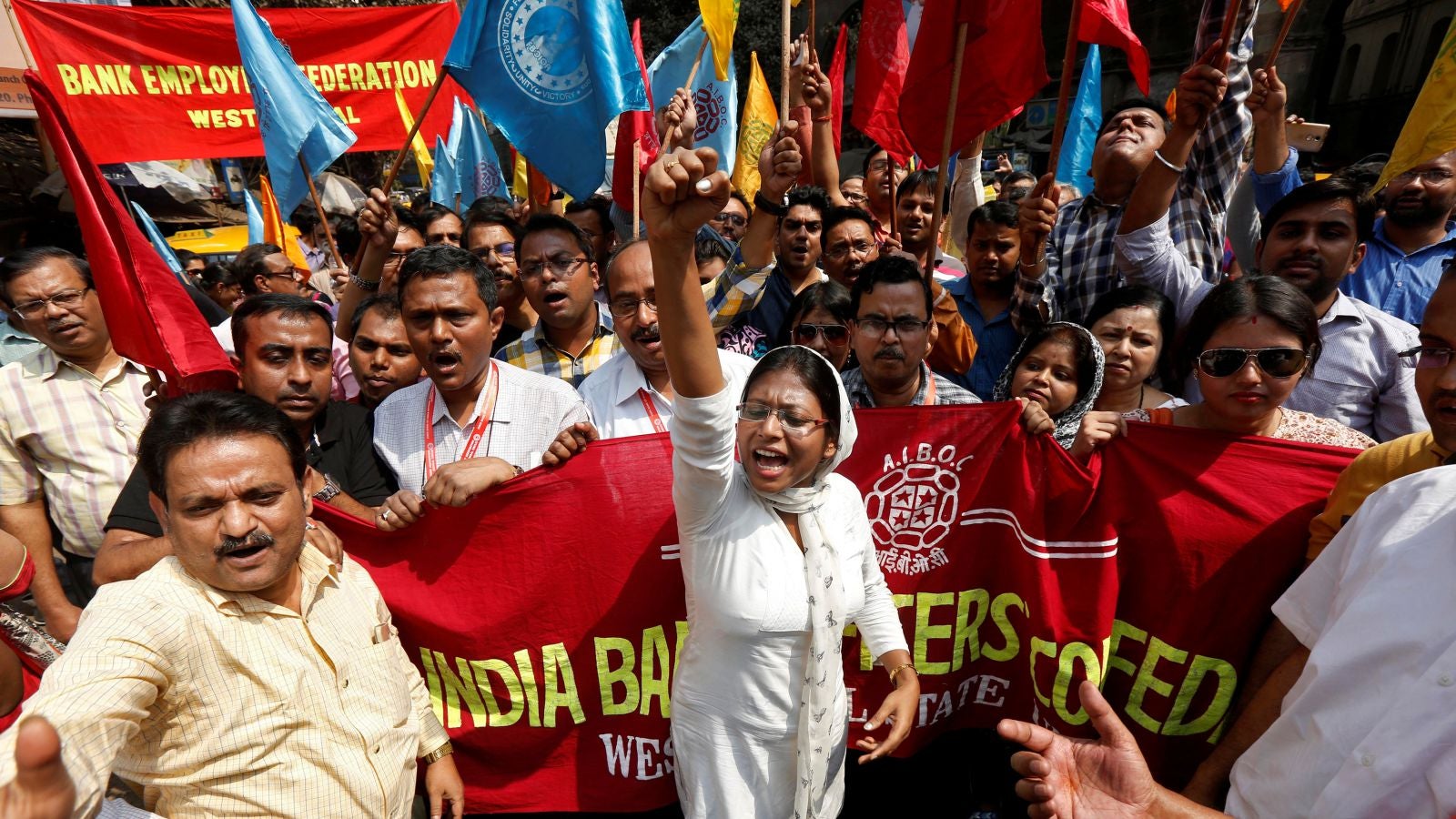A million bank employees in India are on strike over their paltry raises
A million Indian bank employees have declared a two-day strike on May 30 and May 31, bringing the country’s financial nervous system to a grinding halt.


A million Indian bank employees have declared a two-day strike on May 30 and May 31, bringing the country’s financial nervous system to a grinding halt.
Bank and ATM transactions across the country are likely to be affected and participating employee unions are aware of the implications. They plan to intensify the stir if their demands are not met.
The employees are angry over a mere 2% hike they received in 2018 (effective November 2017) as part of the five-year cycle that sees their salaries getting adjusted for inflation periodically. In the last round in 2012, the employees got a 15% bump, and in the round prior to that, the hike was 17.5%.
The All India Banks Employees’ Association (AIBEA), India’s oldest and largest bank employees’ union with around 500,000 members, is leading the protest with support from eight other unions.
“We have not quoted a percentage as of now because 2% is too small to even argue about it. We are ready to negotiate till they can come up with something more reasonable,” CH Venkatachalam, general secretary of the AIBEA, told Quartz.
The unions have been negotiating with the lenders’ lobby, Indian Banks’ Association (IBA), the labour ministry, and the finance ministry since May 05 when the wage revision was first offered.
The banks, on their part, have cited the rising pile of non-performing assets in their books and a series of frauds that have left the industry in the doldrums over the past few years as reasons for the poor raise.
At the end of December 2017, Rs11.90 out of every Rs100 in outstanding loans was at risk of not being recovered, denting banks’ profitability. “We are in the industry that faces lot of risks and right now unfortunately banks are in a bad position, so we can’t offer raises like earlier times,” said VG Kannan, CEO of the IBA.
However, the employees are not buying that line of reasoning.
“At an operating level the banks are still making profits, just that they had to take a hit because of NPAs. But employees can’t be blamed for that,” Venkatachalam said.
The unions have also argued that the annual wage expenditure for banks has come down from 14% in 2012 to 11% in 2017. That, they say, shows that fewer employees have shouldered the rise in work burden caused by expansion of the lenders’ operations; and the staff must be rewarded adequately.
The IBA has also said that lenders won’t negotiate with the unions for hikes at the senior management level. This is another cause of concern as the unions believe this can lead to a loss of transparency. “It will be unfair if the senior management and top executives are getting way higher hikes compared to the staff. This will lead to disparity. For that reason, and to ensure clarity, we want the details to be disclosed which the banks are not willing to,” said Venkatachalam.